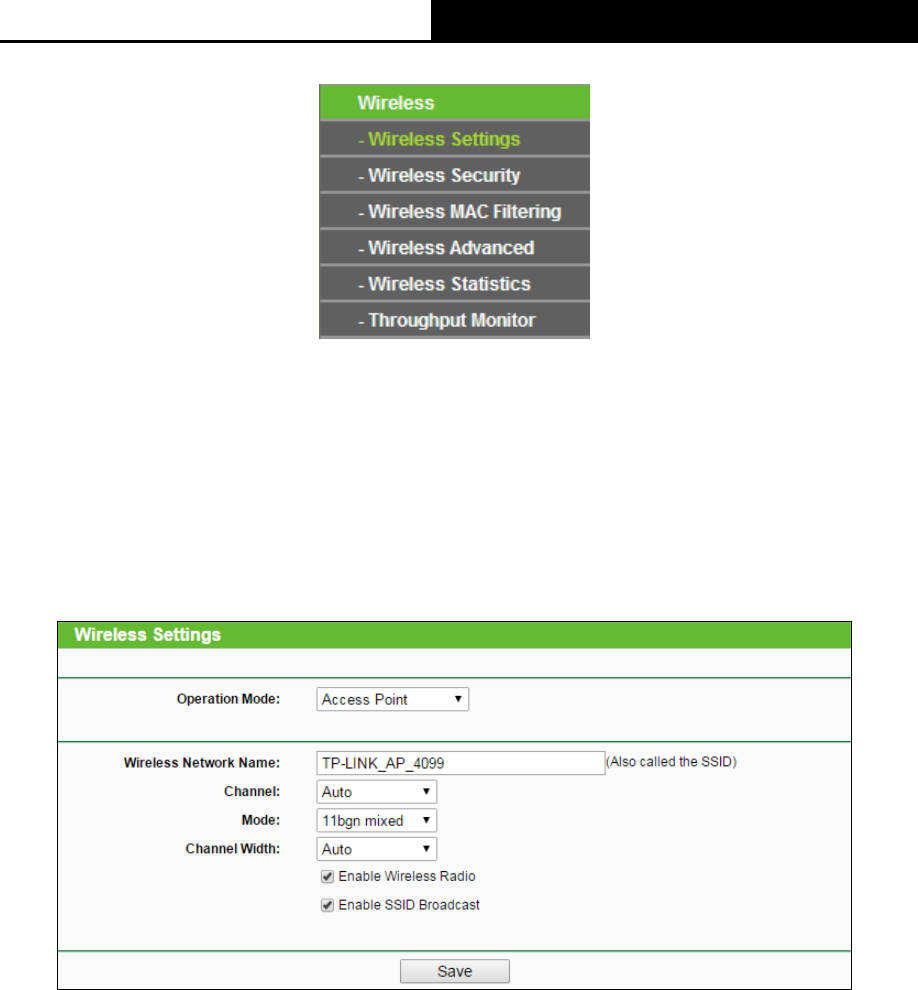User's Manual
Table Of Contents
- 组合 4.pdf
- 组合 2.pdf
- TL-WA801ND UG.pdf
- Package Contents
- Chapter 1 Introduction
- Chapter 2 Hardware Installation
- Chapter 3 Quick Installation Guide
- Chapter 4 Configure the Device
- Appendix A: Application Example
- Appendix B: Factory Defaults
- Appendix C: Troubleshooting
- Appendix D: Specifications
- Appendix E: Glossary
- RF Exposure Information
- TL-WA801ND UG.pdf
- RF Exposure Information
- 组合 2.pdf
- TL-WA801ND IC UG
- 组合 2
- TL-WA801ND UG.pdf
- Package Contents
- Chapter 1 Introduction
- Chapter 2 Hardware Installation
- Chapter 3 Quick Installation Guide
- Chapter 4 Configure the Device
- Appendix A: Application Example
- Appendix B: Factory Defaults
- Appendix C: Troubleshooting
- Appendix D: Specifications
- Appendix E: Glossary
- RF Exposure Information
- TL-WA801ND UG.pdf
- TL-WA801ND UG.pdf
- Package Contents
- Chapter 1 Introduction
- Chapter 2 Hardware Installation
- Chapter 3 Quick Installation Guide
- Chapter 4 Configure the Device
- Appendix A: Application Example
- Appendix B: Factory Defaults
- Appendix C: Troubleshooting
- Appendix D: Specifications
- Appendix E: Glossary
- 组合 2

TL-WA701ND/TL-WA801ND/TL-WA901ND
Wireless N Access Point User Guide
28
Figure 4-11 Wireless menu
4.6.1 Wireless Settings
Selecting Wireless > Wireless Settings will enable you to configure the basic settings for your
wireless network on the screen below (Figure 4-12).This page allows you to configure the wireless
mode for your device. Six operation modes are supported here, including Access Point,
Multi-SSID, Client, WDS Repeater, Universal Repeater and Bridge with AP. The available
setting options for each operation mode are different from those of the other.
1) Access Point: This mode allows wireless stations to access this device.
Figure 4-12 Wireless Settings in Access Point mode
Wireless Network Name - Identifies your wireless network name. Create a name up to 32
characters and make sure all wireless points in the wireless network with the same SSID. The
default SSID is TP-LINK_AP_XXXX (XXXX indicates the last unique four characters of each
device’s MAC address). This value is case-sensitive. For example, TEST is NOT the same as
test.
Channel - Determines the operating frequency to be used. It is not necessary to change the
wireless channel unless you notice interference problems with another nearby access point.
Mode - Select the desired wireless mode. The options are:
• 11b only - Only 802.11b wireless stations can connect to the device.
• 11g only - Only 802.11g wireless stations can connect to the device.
• 11n only - Only 802.11n wireless stations can connect to the device.
• 11bg mixed - Both 802.11b and 802.11g wireless stations can connect to the device.










